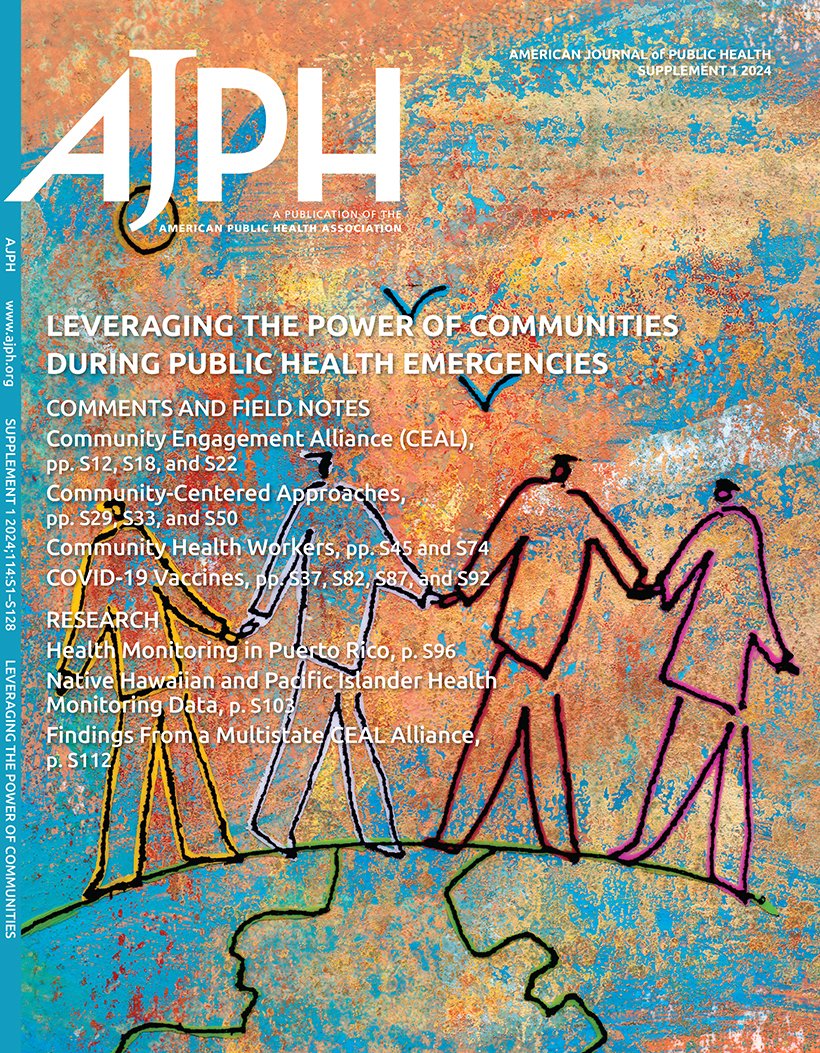Social-Ecological Correlates of Involvement in Firearm-Related Violence in a Nationally Representative Survey of Adults.
IF 9.6
1区 医学
Q1 PUBLIC, ENVIRONMENTAL & OCCUPATIONAL HEALTH
引用次数: 0
Abstract
Objectives. To examine social-ecological correlates of firearm-related violence involvement among adults. Methods. Cross-sectional surveys were collected in the United States between August 2023 and September 2023 through an AmeriSpeak Panel (n = 1681), weighted to be nationally representative. Measures included self-reported involvement in firearm-related violence victimization and perpetration and hypothesized social-ecological risk factors. Results. About 5.9% reported ever perpetrating firearm-related violence; 6.9% reported experiencing firearm-related victimization. In a fully adjusted model, factors associated with perpetration were greater traumatic stress symptoms, beliefs about gun use to enforce respect, positive attitudes about firearms, and firearm-related victimization. Factors associated with victimization were adverse childhood experiences, family and friends' histories of violence and suicide, traumatic stress symptoms, witnessing community violence, firearm-related perpetration, male sex, and lower income. Conclusions. A range of factors across social-ecological domains were associated with firearm-related violence, emphasizing the need for a contextualized approach to understand firearm-related injuries and deaths. Posttraumatic stress and exposure to violence may be particularly important to understanding the cycle of firearm violence. Intervention strategies should be expanded to include individuals vicariously exposed to violence, not just those directly victimized. (Am J Public Health. Published online ahead of print September 11, 2025:e1-e10. https://doi.org/10.2105/AJPH.2025.308213).在一项具有全国代表性的成年人调查中,涉及枪支相关暴力的社会-生态关联。
目标。研究成人涉枪暴力的社会生态关联。方法。横断面调查于2023年8月至2023年9月期间通过AmeriSpeak Panel (n = 1681)在美国收集,加权后具有全国代表性。措施包括自我报告参与枪支相关暴力的受害和实施以及假设的社会生态风险因素。结果。约5.9%的人报告曾犯下与枪支有关的暴力;6.9%的人报告说他们遭受过与枪支有关的伤害。在一个完全调整的模型中,与犯罪相关的因素是更大的创伤应激症状、关于使用枪支以加强尊重的信念、对枪支的积极态度以及与枪支有关的受害者。与受害相关的因素有不良的童年经历、家庭和朋友的暴力和自杀史、创伤性应激症状、目睹社区暴力、与枪支有关的犯罪、男性和较低的收入。结论。社会生态领域的一系列因素与与枪支有关的暴力有关,强调需要从具体情况出发,了解与枪支有关的伤害和死亡。创伤后压力和暴力暴露可能对理解枪支暴力的循环尤为重要。干预策略应扩大到包括间接遭受暴力侵害的个人,而不仅仅是那些直接受害者。公共卫生。2025年9月11日提前在线发布:e1-e10。https://doi.org/10.2105/AJPH.2025.308213)。
本文章由计算机程序翻译,如有差异,请以英文原文为准。
求助全文
约1分钟内获得全文
求助全文
来源期刊

American journal of public health
医学-公共卫生、环境卫生与职业卫生
CiteScore
9.50
自引率
3.90%
发文量
1109
审稿时长
2-4 weeks
期刊介绍:
The American Journal of Public Health (AJPH) is dedicated to publishing original work in research, research methods, and program evaluation within the field of public health. The journal's mission is to advance public health research, policy, practice, and education.
 求助内容:
求助内容: 应助结果提醒方式:
应助结果提醒方式:


